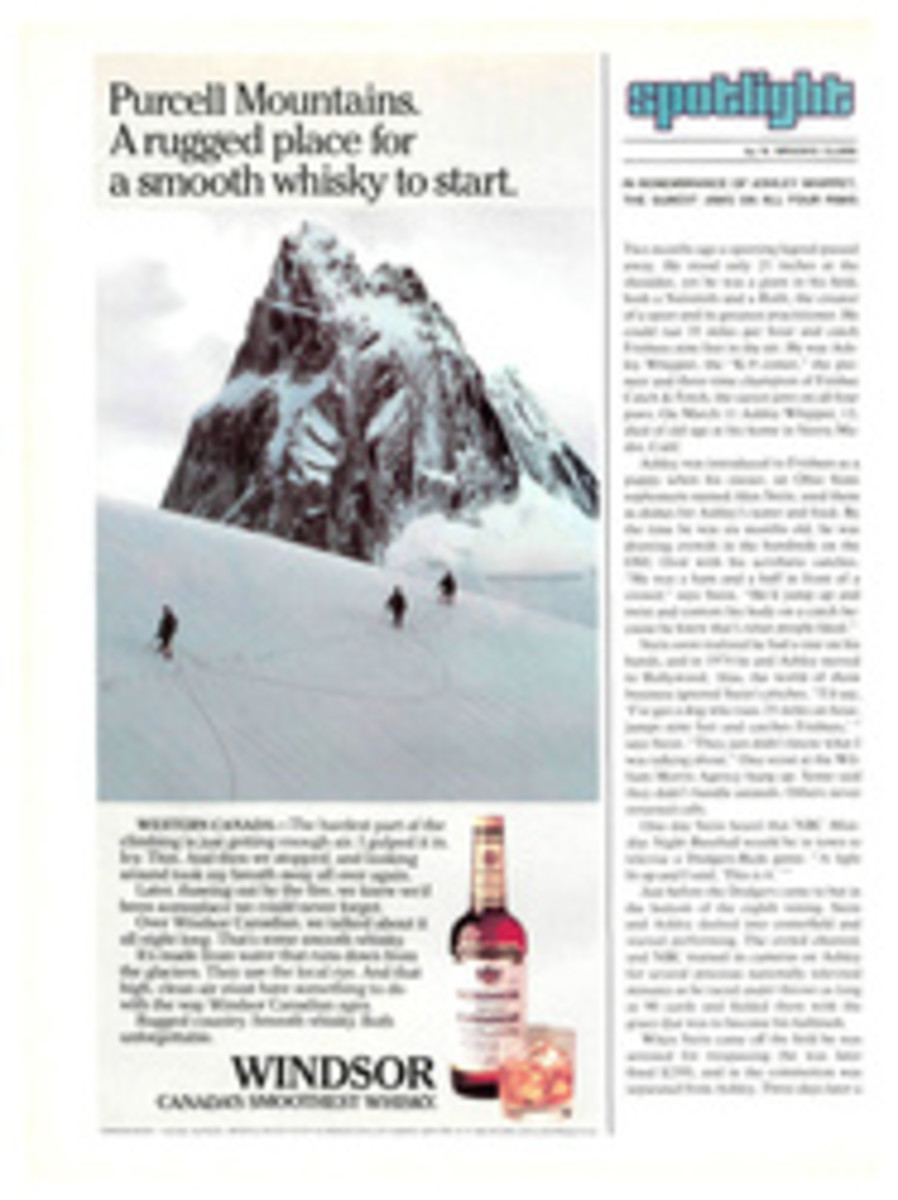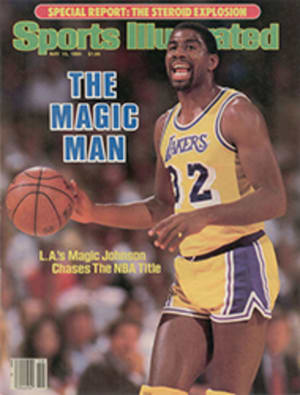
WINNING A HIGH STAKES TENNIS MATCH IN JAKARTA WAS HARDLY 'NO PROBLEM'
It was like a cockfight with me as one of the roosters, but the arena was a tennis court and I was surrounded by several hundred Indonesians screaming through a fetid haze of kretek cigarette smoke. Many of them were clutching satchels of what seemed like enough rupiah to cover the national debt of Nepal. Somehow I had become involved in a high-stakes doubles match against a wily hustler and one of the country's top players. It was too late to chicken out.
I was in Indonesia to visit a college roommate who had lived in Jakarta since 1974. John and I had played on the tennis team, and he had promised to line up some good games, including one or two with Davis Cuppers. I arrived at John's house on Christmas Day, and after a breakfast of fried rice, mangoes and mangosteens, he gave me a tour of the city. Because Indonesia is predominantly Muslim, Christmas ranks about where Columbus Day does in our holiday hierarchy. Some stores were open, some were closed. Our final stop was the Borobudur Intercontinental Hotel, which had, around in back, eight tennis courts.
Gathered around one of the courts was a throng of noisy spectators, watching what at first glance appeared to be a B-level doubles match, but with one major difference: There were five players on the court, two versus three. John and I joined the crowd, and just as I was starting to catch on to the various formations the threesome used the match ended. As the players left the court, the threesome handed the twosome a wad of bills. A lot of money changed hands in the bleachers as well. I had never seen more than a few beers wagered on a tennis match. Unlike golf, tennis has no workable handicapping system—or so I thought. "What's going on here?" I asked John.
He explained that every Christmas 40 or so players from all over the country play in an event called taruhan, which means gambling in Indonesian. Nearly everyone who shows up to play or wager is of Chinese descent. Indonesian-Chinese make up 3% of the country's 160 million inhabitants, and like their ancestors in China, they are avid bettors. Dec. 25 was the last of four days of taruhan, and from early morning until dark the players either were on the court or making book. No one knows how much has been wagered during a taruhan, but the winner in 1983 is said to have gone home with more than 25 million rupiah, or $25,000.
I watched, transfixed, as another match began, and it was soon obvious the players would do anything to make the action competitive, i.e., bettable. Besides three against two, the handicaps included denying a team the doubles alleys, making a team begin every game 0-15 in the hole and allowing a player to serve for his partner. The use of nationally ranked players is perfectly legal. They put up no money of their own but receive an appearance fee plus a percentage—perhaps 10%—of their partners' earnings. Some of them do very nicely. For four days' work last year, a 22-year-old woman made six million rupiah.
After John had briefed me, he began to converse in Indonesian with some acquaintances. Before long, he was jawing with a portly middle-aged man carrying a fistful of bills. I learned he was a timber magnate named Gunawan Sutanto. When John introduced us, Gunawan inspected my right forearm, emitted a sustained "oooohh" and grinned.
"Gunawan wants us to play him and his partner for a million rupiah," John said casually. "What do you say?"
A thousand dollars? Surely he was joking. I had brought only $2,000 for the whole trip, money that had to last through a week in Indonesia and four days in Bangkok. I hadn't touched a racket in two weeks, and, of course, I had no idea how good our proposed opponents were. For that matter, I didn't know how much John, who had played in college only as a freshman way back in 1969, had been playing lately.
Further, the match would be only one set with no tiebreaker. If the score reached 5-5, we'd play one more game. Naturally, the team serving at 5-all would have a considerable advantage. Gunawan insisted that he and his partner serve first, which, of course, meant they would be serving at 5-5.1 huddled with John.
Gunawan, he assured me with what has to be the most ubiquitous English expression in Asia, was "no problem." However, John continued, Gunawan's hired gun, Andy Kim, was another matter. Andy was 22 and one of the best players in Indonesia. A week earlier at a tournament in Jakarta, John had seen Andy take a set from Justedjo Tarik, who would beat Ben Testerman, the 22nd-ranked player in the world, the next day. "Look at it this way," said John. "The experience alone is worth the money. Besides, I don't think Andy is all that great. Trust me, winning will be no problem." I decided to trust him.
We rushed back to John's house to change and grab 100 10,000-note rupiah from his safe. John stuffed the money inside a racket cover, and we returned to the hotel.
As soon as we took the court, it became obvious that Gunawan was half showman and half psych-artist. Well aware that I was rusty, he tried to cajole us into starting right away. He scampered all over the court in an effort to prevent our hitting with Andy, who could do a much better job of warming us up. Mercifully, Andy didn't engage in any chicanery; for him this was strictly business. Meanwhile, spectators streamed onto the court. Some just wanted to shoot the breeze and some volunteered to serve as ball boys, but most tried to entice John and me into laying off part of the action. We could have covered the entire bet, but John turned down all offers.
We were set to start when Gunawan announced that he wanted Andy to do all the serving for his team. We promptly nixed that proposal and Gunawan relented. Then he informed us about two house rules: First, reaching over the net, as well as touching it, was permitted. Second, "no foot-faulting." The first rule didn't bother me, but the second one sure did. What in the world did he mean by that? Was Gunawan planning to unnerve us by calling foot faults whenever we served a winner? John told me not to worry, and I got ready to receive serve—only to see a man leave the bleachers, climb into the umpire's chair and declare himself the umpire. How many side bets did he have going? Fortunately he said he would call only the score, not the lines.
On the first point of the match Andy hit a serve that was at least six inches deep. I signaled out, and Gunawan took off like a rampaging jack-in-the-box, emitting a variety of indecipherable noises and pointing frantically to a nonexistent mark inside the service line. Now I was certain I had entered The Match of Living Dangerously. Once again John told me to relax, that Gunawan was merely testing us. He was right. Gunawan calmed down and never questioned another call.
For the balance of the set Gunawan devoted most of his energy to staying out of Andy's way and to yapping at John and me as we served and hit overheads. He badgered us with a litany of Indonesian exhortations and with "come on boy, come on boy" in English. Between points he worked the crowd masterfully. When we hit a winner, he feigned despair and elicited sympathy by casting himself as the beleaguered underdog up against two young and strong Americans. That the youngest and strongest player on the court was his partner didn't seem to matter. When his team won a point, Gunawan led the applause.
We broke Gunawan's serve in the third game and were leading 4-3, 40-30 on John's serve when Gunawan threw up a mile-high lob into the rapidly approaching darkness. John's smash landed in the net. Worse, it broke two strings in his racket. Bedlam! Gunawan let loose with myriad macaronic effusions, and the betting became frenzied. I heard a dozen or so spectators cry out "tambah, tambah" (up the ante). Everyone sensed a turning point. If Andy and Gunawan broke us here, they would simply have to hold serve the next game to be serving for the set at 5-5. Worse, I had no idea whether John had another racket. The relief I felt when I saw him produce one from his bag didn't ease my anxiety. But John, who reassured me with a series of "no problems," remained unflappable. After we saved two break points, he served us out of danger.
At 5-4 we reached double match point on my service. I knew exactly what I wanted to do: cut my first ball wide to Andy's forehand. That was his better side, but as the set progressed, the spectators standing on the side of the court opposite the bleachers had edged ever closer to the alley. My serve landed just inside the sideline. Andy might well have chased it down had he not run into a clutch of his countrymen. I waited for Gunawan to explode. Nothing...then a shrug, a smile and a handshake.
As Gunawan was peeling off one million rupiah from his bankroll, I asked him if I could come to next year's taruhan in Bali. His face lit up.
"No problem," he said.
ILLUSTRATION
NANCY STAHL

